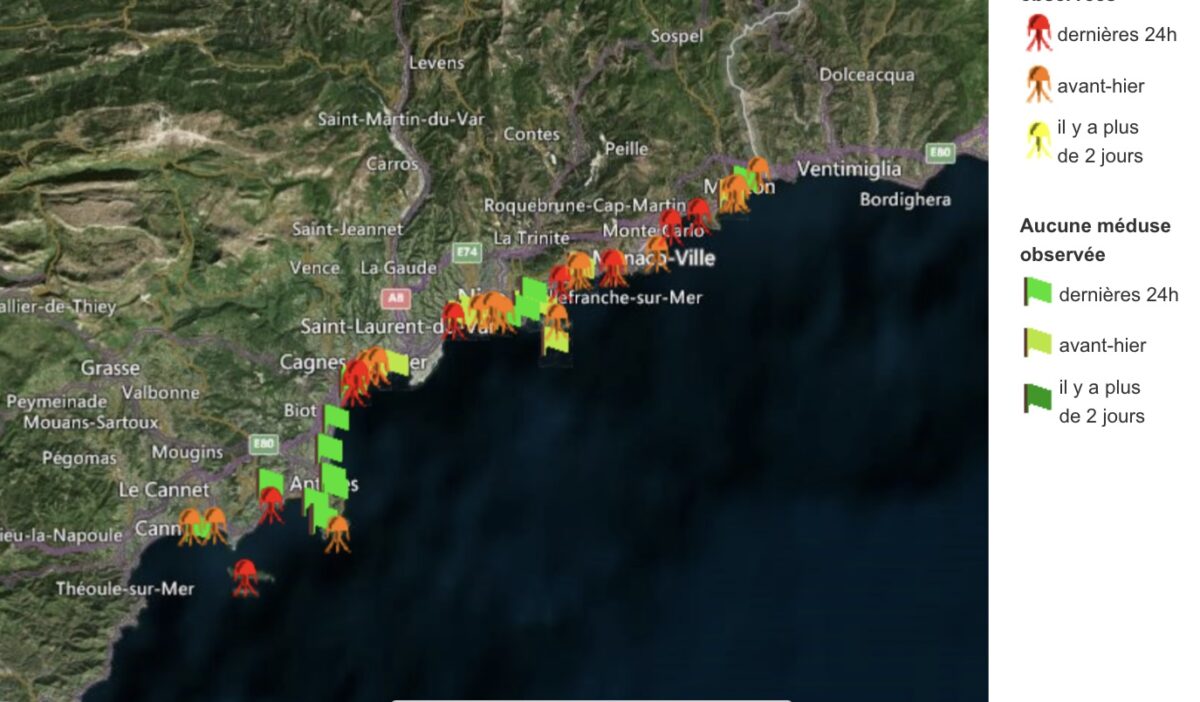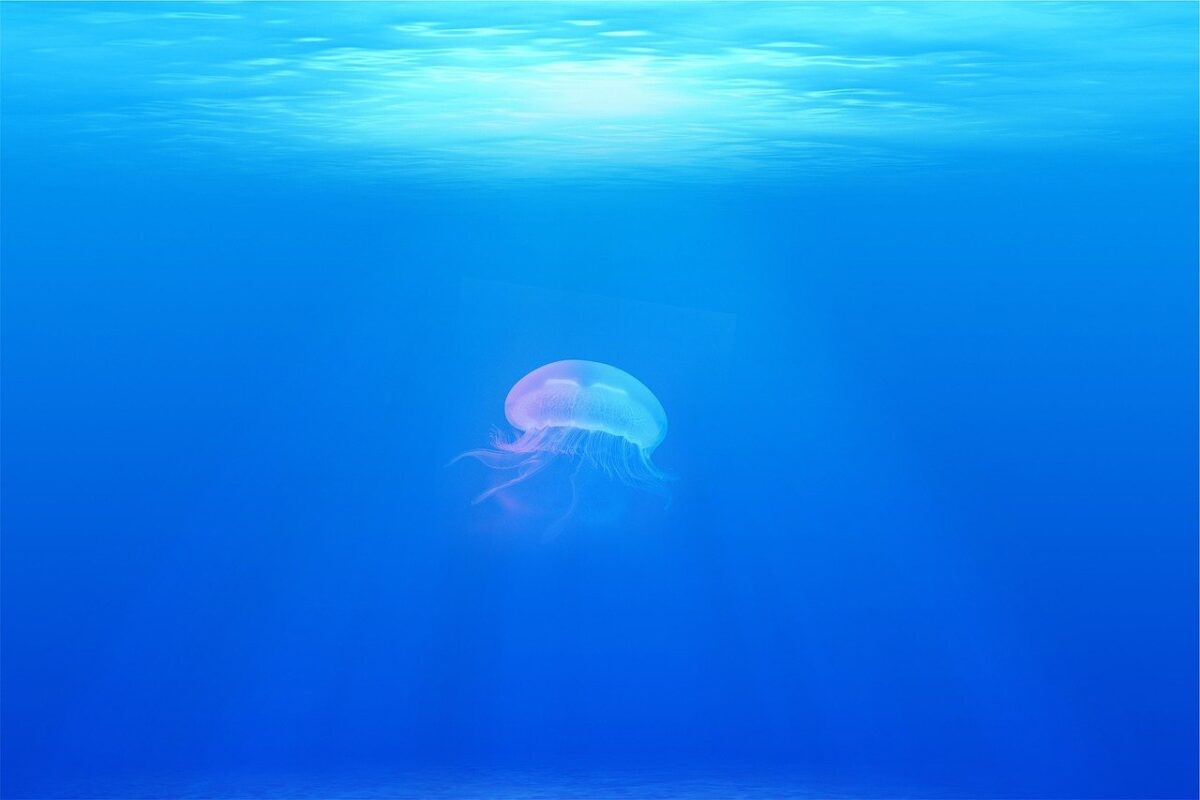In the last 48 hours, swimmers have been reporting jellyfish en masse in the Mediterranean basin.
The Jellyfish are Back
With the scorching heat of recent days, swimmers are multiplying on our coasts. Yet, they too have arrived. Transparent and colorful, jellyfish have settled on our beaches.
Thus, the site meduse.acri.fr, which aims to record the presence or absence of jellyfish on the Mediterranean Sea coasts, is receiving mass reports.

Although benign in the majority of cases, a jellyfish sting is one of those pains that people remember and prefer to avoid.
At Nice Premium, we give you tips to relieve the pain in case of a sting.
These tips are only valid if the stung person does not show signs of a severe reaction (breathing difficulties…) or a sting on the face. In one of these cases, it is necessary to consult a doctor immediately.
What to Do
- Get out of the water.
- Gently remove any potential tentacle fragments with a thin object like a piece of cardboard.
- Apply wet sand and gently rub to remove any stinging filament residues.
- Rinse thoroughly with seawater
- Bring the wound close to a heat source. The venom of jellyfish is thermolabile, meaning it dissolves in heat.
- Apply vinegar to the wound. Although this solution is painful, it will help eliminate the stinging vesicles left by the jellyfish.
- Go to the nearest first aid station to disinfect the wound and possibly apply an antihistamine cream, if necessary.
What Not to Do
- Contrary to popular belief (widely popularized by a certain Joey Tribbiani…) urinating on a jellyfish sting will not help. On the contrary, urine may aggravate the pain and cause a secondary infection.
- Rinse with fresh water. This risks rupturing any remaining cells and releasing venom.
- Apply alcohol to the wound.
- Suck on the wound in the hope of drawing out the venom.
- Incise the wound.
A final tip, do not touch a jellyfish stranded on the beach. Its tentacles remain stinging after its death.


